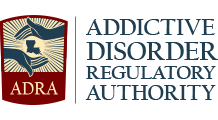Understanding the signs, symptoms, and effects of self-harm is an important part of the effort to get treatment for your child. At Acadiana Treatment Center in Sunset, Louisiana, we’re proud to be a source of information and comprehensive care for adolescents who have been struggling with self-harm.
Understanding Self-Harm
Learn about self-harm
Self-harm is a condition in which an adolescent deliberately inflicts pain or injury to themselves without intending to end their life. This disorder is also known as self-injury or nonsuicidal self-injury (NSSI).
Adolescents who exhibit self-harming behaviors might burn themselves, hit walls or themselves, cut or carve their skin, or attempt to break their bones. Although adolescents who self-harm may cause injury to any part of the body, the most common sites of self-harm are the stomach, thighs, wrists, and hands.
Self-harm is not typically an attempt to die by suicide; it is usually the adolescent’s way of coping with intense emotional pain, anger, and frustration. When an adolescent self-injures, they might feel momentary relief from the painful emotions that were overwhelming them, followed by feelings of guilt and shame for engaging in self-harming behavior.
Some adolescents engage in self-harm because they are struggling with a mental health disorder, such as depression, an anxiety disorder, or an eating disorder. Other adolescents who engage in self-injury do not meet the clinical criteria for a mental health diagnosis.
Although most adolescents who self-injure do not intend to engage in life-threatening behavior, the damage they do to their bodies can inadvertently be more serious. In some cases, the results of self-harming can be fatal.
This condition can be highly dangerous if left untreated. But with the right help, your child can learn healthier ways to cope with the painful emotions they are battling and overcome the urge to harm themselves.
Statistics
Statistics about self-harm
The American Psychological Association (APA) has reported the following statistics about self-harming behaviors among adolescents in the United States:
- Around 17% of adolescents engage in self-harming behaviors.
- Approximately 15% of college students self-injure at least once.
- About one-third of college students engage in self-injury so severe that they should have seen a medical professional.
- Students who self-injure are three times more likely to demonstrate suicidal thoughts or actions.
- Public perception is that people who self-injure tend to be female, but up to half of those who engage in self-harm are male.
Causes & Risks
Causes and risk factors for self-harm
There is no definitive cause for self-harming behavior. Many factors can influence the chances that your child might engage in self-injury, such as:
- Gender (adolescent girls are more likely to engage in self-harming behaviors than adolescent boys)
- Struggles with mental health conditions, such as depression or an anxiety disorder
- Sexual orientation (gay and bisexual adolescents are more likely to engage in self-harming behaviors than heterosexual adolescents)
- Bullying, peer rejection, or other peer victimization
- History of neglect or sexual, physical, or emotional abuse
- Substance abuse or addiction
Signs and Symptoms
Symptoms of self-harm
Self-harm is a complicated condition that each adolescent experiences differently depending on whether they are also struggling with a mental health disorder. The thought patterns and behaviors associated with self-injury are also different for every child.
Aside from the actual physical act of self-harm, these are some common signs and symptoms that could indicate that your child is struggling with the compulsion to engage in self-injury:
Behavioral symptoms:
- Wearing long sleeves or long pants, even in hot weather
- Acting out impulsively or unpredictably
- Spending more time alone
Physical symptoms:
- Scars that appear in noticeable patterns
- Frequent fresh cuts, burns, scratches, bruises, or other injuries
- Sleeping much more or much less than usual
- Having trouble eating, or eating a lot more than usual
Mental symptoms:
- Feeling hopeless or worthless
- Sense of shame or guilt
- Dramatic mood swings
- Sudden angry outbursts
Effects
Effects of self-harm
Although an adolescent might think they are using self-injury to help themselves cope with painful or overwhelming emotions, engaging in self-harming behavior can cause irreparable damage to a young person’s life. An adolescent who does not receive professional care for self-harm is at much higher risk of experiencing many different negative effects, including:
- Strained relationships with friends and family
- Failing grades at school
- Poor performance at their after-school job
- Serious injuries due to self-harming behaviors
- Development or worsening symptoms of other mental health conditions
- Suicidal ideation
- Suicide attempts
By getting your child proper, effective help for self-harm, you can significantly lower their risk for many of these negative outcomes. Receiving care will allow your child to start to heal from any damage they might have already experienced. With evidence-based help, your child can learn to cope with life’s stresses and pressures without turning to self-harming behaviors.
Co-Occurring Disorders
Common co-occurring disorders among people who self-harm
Although not everyone who engages in self-harming behavior struggles with a mental health disorder, this condition is often the symptom of a mental health concern. Adolescents who experience the compulsion to self-injure might be at an increased risk for mental health disorders such as:
- Anxiety disorders
- Depression
- Eating disorders
- Posttraumatic stress disorder (PTSD)
- Borderline personality disorder












